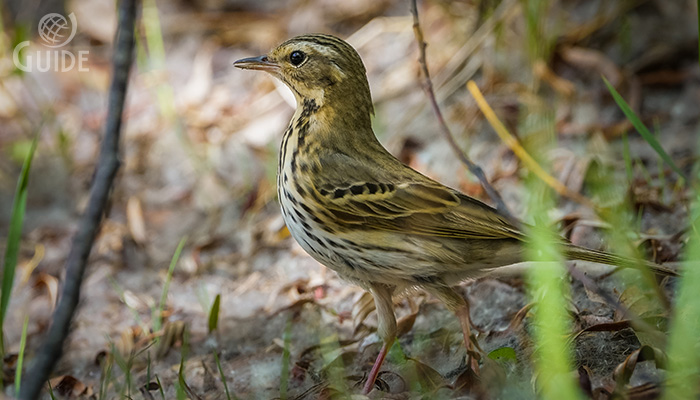
English: Olive-backed
Pipit, Siberian Tree Pipit, Hodgson’s Pipit
Russian: Пятнистый конёк
Mongolian:
Бөртөт шийхнүүхэй
German: Waldpieper
French: Pipit a dos olive
Japanese: ビンズイ (Binzui)
Body length: 14-15 ½ cm.
Breeds in open woodland in Siberia and in far NE of Europe, winters in S Asia.
Rare but annual autumn vagrant in W Europe (a few spring and even winter
records).
Identification:
Very like Tree Pipit (with similarly short, curved hindclaw; all other pipits
have slightly longer and less curved hindclaw), but has somewhat different head
pattern, more green-tinged brown-grey and less clearly marked mantle and crown,
also on average heavier black spotting on breast (extremes, however, the same
with regard to breast markings). Suercilium bold, whitish and unstreaked (Tree
Pipit has finely streaked pale yellow-brown supercilium of variable
prominence), distinctly tinged rusty-buff in front of eye (at best faintly buff
on Tree Pipit). Above supercilium usually shows a dark border to crown-side
(never obvious on Tree Pipit). Behind ear-coverts, diagonally below rear end of
supercilium, almost invariably has an isolated pale spot, and below this a dark
spot (sometimes a faint hint of such spots on Tree Pipit). In autumn always
shows fresh tertials with broad olive-brown edges (imm. Tree Pipits have narrow
grey-white edges to often slightly worn tertials).